Part 1: General Observations of Campus Protests
Unpacking the Delay: Enhancing Emergency Response on College Campuses Amid Increasing Protests
College campuses have historically been epicenters of vibrant discussion and peaceful protests, serving as a stage for students and community members to voice their concerns and advocate for change. However, in recent years, an alarming trend has emerged where these demonstrations, originally peaceful, are escalating into violent confrontations. This worrying development has exposed significant vulnerabilities in crisis management systems across various institutions and underscored the need for a strategic overhaul in how emergencies are handled.
Nature and Evolution of Campus Protests
College protests, anchored in the tradition of academic freedom, play a pivotal role in shaping discourse and driving social change. Originating from a diverse array of causes—ranging from civil rights to climate change—these demonstrations are typically characterized by their passionate, yet peaceful, gatherings. However, the landscape of campus protests has evolved significantly. What once were primarily peaceful marches and rallies have, in some instances, escalated into more intense confrontations. This shift has not only introduced new dynamics into campus life but has also posed complex challenges for managing safety and security.
play a pivotal role in shaping discourse and driving social change. Originating from a diverse array of causes—ranging from civil rights to climate change—these demonstrations are typically characterized by their passionate, yet peaceful, gatherings. However, the landscape of campus protests has evolved significantly. What once were primarily peaceful marches and rallies have, in some instances, escalated into more intense confrontations. This shift has not only introduced new dynamics into campus life but has also posed complex challenges for managing safety and security.
The transition from peaceful protests to violent escalations can often be traced to a variety of factors. These include the injection of external agitators, misunderstandings between protesters and law enforcement, or the spontaneous outbreak of conflict among differing groups. Each of these elements can dramatically change the nature of a protest, turning a controlled demonstration into a potentially hazardous situation that requires immediate and effective crisis management strategies.
Detailed Analysis of Protest Dynamics
The anatomy of a campus protest often begins with a well-organized plan, clear objectives, and designated leaders who guide the demonstration’s course. Initially, the atmosphere at such events is controlled and predictable. However, the introduction of counter-protesters or provocative elements can quickly alter this dynamic. For instance, when opposing groups interact, the risk of physical confrontations increases, often exacerbated by emotional responses and the crowd’s psychology.
Additionally, the physical environment of a protest can influence its trajectory. Narrow pathways, confined spaces, and the proximity of symbolic or contentious locations on campus can contribute to tensions. When space becomes a constraint, minor scuffles can escalate into broader conflicts, making crowd control more challenging and increasing the likelihood of injuries.
Campus Protests: A Microcosm of Wider Social Issues
Campus protests not only reflect broader societal tensions but also amplify them within the microcosm of university life. Issues like racial inequality, economic disparity, and political division find intense expression in these academic settings, where the youth are more politically active and socially conscious. This heightened sensitivity can lead to more frequent and intense demonstrations, necessitating a robust response mechanism that can handle the complexities of modern campus protests.
Emergency Response Analysis
The initial response to campus protests is critical in setting the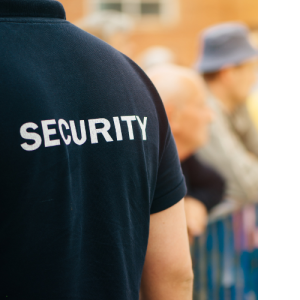 tone for how events will unfold. Effective management relies on quick, coordinated actions by campus security and local law enforcement. However, challenges in this area are multi-faceted, involving delays in response, miscommunication, and often, an underestimation of the resources required to handle escalating situations.
tone for how events will unfold. Effective management relies on quick, coordinated actions by campus security and local law enforcement. However, challenges in this area are multi-faceted, involving delays in response, miscommunication, and often, an underestimation of the resources required to handle escalating situations.
- Timing and Coordination of Response: Delays in mobilizing law enforcement can be critical. The time taken to assess the situation, decide on a course of action, and deploy necessary forces can significantly impact the outcome of a protest. Swift action is often required to prevent violence, but this must be balanced with the need to ensure that the response is not overly aggressive, which itself can exacerbate the situation.
- Decision-making Hierarchy and Protocols: Unclear decision-making structures and protocols can hinder effective response. Without a clear hierarchy and established protocols, there can be hesitation or confusion about who is authorized to make critical decisions. This is especially problematic in situations requiring immediate action to prevent harm or property damage.
- Resource Allocation and Preparedness: The allocation of resources—both human and material—is crucial in managing protests. Inadequate staffing, lack of proper riot gear, or insufficient non-lethal means to manage crowds can leave law enforcement ill-prepared to handle sudden escalations. Moreover, the logistical aspects of mobilizing these resources in a timely manner play a significant role in the success or failure of the response efforts.
Challenges in Communication During Protests
Effective communication during a crisis is indispensable.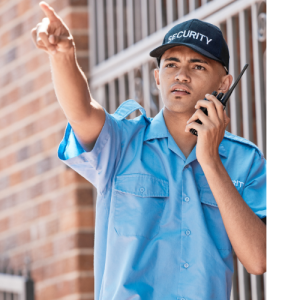 However, during campus protests, several communication challenges can arise:
However, during campus protests, several communication challenges can arise:
- Internal Communication Among Security Personnel: There must be a seamless flow of information among all security personnel involved. This includes real-time updates on the movement of protesters, identification of potential flashpoints, and coordination of response efforts. Breakdowns in this communication chain can lead to disjointed and ineffective handling of the situation.
- Communication with Protesters: Engaging with protest leaders or representatives can help de-escalate tensions and facilitate a peaceful resolution. However, establishing this line of communication under duress can be challenging. Security forces need to be trained not only in crowd control tactics but also in negotiation and conflict resolution skills.
- Public Communication: Keeping the wider campus community informed is crucial during protests. This involves timely alerts about the status of the protest, advice on areas to avoid, and updates on the measures being taken to restore order. Effective public communication can prevent rumors and misinformation, which can further inflame the situation.
These foundational issues set the stage for a deeper exploration of how emergency management can be optimized to handle the evolving nature of campus protests effectively. By understanding these dynamics, institutions can prepare more comprehensive strategies that not only respond to crises as they occur but also work proactively to prevent violence and ensure the safety of all participants.
Part 2: Challenges in Emergency Management
Comprehensive Assessment of Response Times
Efficient response times are paramount in managing campus protests effectively, yet this remains one of the most critical challenges faced by institutions. The delay between the initial onset of a protest turning violent and the arrival of adequate security measures can exacerbate the situation, leading to injuries and property damage. Understanding and addressing the factors contributing to delayed responses is crucial for improving overall safety.
- Logistical Constraints: Often, logistical issues can
 hinder rapid deployment. This includes the physical layout of the campus, which may have multiple access points or restricted areas that complicate the movement of emergency responders. Additionally, the availability of personnel ready to respond during off-hours or weekends can impact response times.
hinder rapid deployment. This includes the physical layout of the campus, which may have multiple access points or restricted areas that complicate the movement of emergency responders. Additionally, the availability of personnel ready to respond during off-hours or weekends can impact response times. - Technological Limitations: While technology can aid in quick mobilization and communication, limitations in current systems may delay the response. Issues such as outdated communication equipment, lack of integration between different security platforms, or insufficient real-time surveillance capabilities can prevent a timely and coordinated response.
- Procedural Delays: Bureaucratic procedures can also slow down response times. The need for approvals from multiple levels of command, unclear protocols for escalating issues from campus security to local law enforcement, and hesitancy in making decisive moves due to potential repercussions can all contribute to delays.
Challenges in Resource Allocation and Management
Effective management of resources during a protest is crucial for maintaining control and ensuring safety. However, several challenges can impact resource allocation:
- Inadequate Forecasting of Needs: Properly forecasting
 the resources needed to handle potential escalations in protests is essential. This includes personnel, crowd control equipment, and emergency medical resources. Often, misjudgments about the scale of a protest or the intensity of potential confrontations can lead to insufficient resource allocation.
the resources needed to handle potential escalations in protests is essential. This includes personnel, crowd control equipment, and emergency medical resources. Often, misjudgments about the scale of a protest or the intensity of potential confrontations can lead to insufficient resource allocation. - Scalability Issues: The ability to scale resources up or down depending on the situation is vital. Many institutions struggle with this aspect of resource management, either over-deploying, which can intimidate and escalate tensions, or under-deploying, which can lead to loss of control over the situation.
- Coordination with External Agencies: Coordination between campus security and external law enforcement agencies is often necessary, especially for larger protests. However, discrepancies in jurisdiction, capabilities, and communication can hinder effective collaboration and resource sharing.
Safety Protocols and Their Implementation
The development and implementation of safety protocols are critical in managing protests effectively. However, existing safety measures often fail during unexpected violent escalations due to several reasons:
- Outdated Protocols: Many safety protocols may not be updated to reflect current realities or best practices in crowd management. As a result, they may not provide clear guidance for handling rapidly escalating situations or complex, multi-faceted emergencies.
- Training Deficiencies: Regular and comprehensive training for all response personnel is crucial. This training should not only cover tactical responses but also crisis communication, negotiation, and emergency medical assistance. A lack of ongoing training can result in personnel who are unprepared to implement safety protocols effectively.
- Technology Integration: Integrating technology into safety protocols can provide significant advantages, such as early warning systems, real-time crowd monitoring, and streamlined communication channels. However, challenges such as technological adoption, integration complexities, and training personnel to use new tools effectively can impede the practical application of these technologies.
Communication Challenges and Solutions
Effective communication during campus protests is essential for managing the situation and ensuring the safety of all involved. However, achieving this can be challenging due to several factors:
- Real-Time Information Sharing: The ability to share information in real-time among all stakeholders—including campus security, local law enforcement, protest organizers, and the campus community—is crucial. However, differences in communication platforms, data compatibility issues, and delays in information dissemination can hinder effective communication.
- Public Relations Management: Managing the narrative during and after a protest is crucial for maintaining public trust and institution reputation. Missteps in communication, especially in today’s digital age where information spreads rapidly, can lead to misinformation and heightened public scrutiny.
- Crisis Communication Infrastructure: Developing a robust infrastructure to facilitate effective communication during emergencies is essential. This includes dedicated communication channels, trained personnel capable of managing crisis communication, and protocols for engaging with media and the public.
By addressing these challenges, institutions can enhance their emergency management capabilities and ensure that they are better prepared to handle the complexities of modern campus protests. This preparation involves not only improving immediate response capabilities but also building a framework that allows for quick adaptation to changing circumstances, ensuring the safety and security of the campus community in any situation.
Part 3: Bridging Challenges to Solutions
As colleges continue to navigate the complexities of campus protests, bridging the identified gaps in emergency management is crucial. Here, we explore how integrating innovative strategies and technologies can significantly enhance response capabilities and overall campus safety.
Strategic Enhancements in Emergency Response
- Advanced Planning and Simulation: Institutions
 should invest in advanced planning and simulation tools that allow for detailed scenario planning and response testing. By utilizing virtual reality (VR) and augmented reality (AR) technologies, campuses can simulate various protest scenarios, providing security personnel with realistic training environments. These simulations can help refine decision-making processes, crowd management strategies, and emergency response timing, ensuring a well-coordinated action when real situations arise.
should invest in advanced planning and simulation tools that allow for detailed scenario planning and response testing. By utilizing virtual reality (VR) and augmented reality (AR) technologies, campuses can simulate various protest scenarios, providing security personnel with realistic training environments. These simulations can help refine decision-making processes, crowd management strategies, and emergency response timing, ensuring a well-coordinated action when real situations arise. - Technology Integration: Implementing cutting-edge technologies like drone surveillance, AI-powered crowd analysis, and real-time threat assessment systems can transform campus security. Drones can provide a bird’s-eye view of the protest, offering real-time data on crowd size, movement patterns, and potential hotspots. AI algorithms can analyze social media feeds and other digital communications to predict where protests might occur and how they could escalate, enabling preemptive actions.
- Resource Flexibility and Scalability: Developing a flexible resource management system that can adapt to the fluid dynamics of campus protests is essential. This includes having rapid deployment teams on standby during known protest events and scalable resource plans that can adjust based on real-time assessments. Partnerships with local law enforcement and other emergency services should be streamlined to ensure that additional resources can be mobilized quickly without bureaucratic delays.
Communication and Coordination Excellence
- Unified Communication Platforms: To overcome the
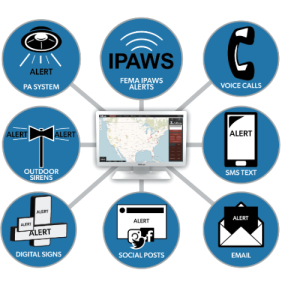 challenges of disjointed communication efforts, campuses should invest in unified communication platforms that seamlessly integrate different agencies and services. These platforms should facilitate instant data sharing and communications not only among campus security and local police but also with fire departments, medical teams, and even protest organizers to ensure a coordinated response.
challenges of disjointed communication efforts, campuses should invest in unified communication platforms that seamlessly integrate different agencies and services. These platforms should facilitate instant data sharing and communications not only among campus security and local police but also with fire departments, medical teams, and even protest organizers to ensure a coordinated response. - Community Engagement Initiatives: Building strong relationships with the student body and other campus community members through regular engagement initiatives can foster a collaborative approach to managing protests. Establishing channels for dialogue and feedback can help in understanding the concerns of protesters, potentially preventing the escalation of demonstrations. Furthermore, these relationships can aid in quick conflict resolution when tensions rise.
- Crisis Communication Training: Specialized training programs in crisis communication should be mandatory for all campus security personnel. These programs should focus on conflict de-escalation techniques, effective use of public address systems during emergencies, and strategic communication to avoid misinformation and panic among the campus community.
Part 4: Implementing Change
Actionable Recommendations for Campus Security
- Regular Review and Update of Protocols: Campus
 security protocols should be regularly reviewed and updated to align with the latest safety standards and response strategies. This should include revising resource allocation plans, emergency contact lists, and engagement strategies to ensure they are current and actionable.
security protocols should be regularly reviewed and updated to align with the latest safety standards and response strategies. This should include revising resource allocation plans, emergency contact lists, and engagement strategies to ensure they are current and actionable. - Investment in Training and Equipment: Continuous investment in training and the latest security equipment is vital. This includes not only traditional security training but also specialized workshops on handling high-tension situations, legal considerations during protests, and first aid.
- Feedback Loop Integration: After each protest, a structured feedback mechanism should be implemented. This involves conducting debrief sessions with all stakeholders to discuss what went well and what didn’t. Learning from each event will be critical in refining strategies and preparing for future incidents.
Case Studies of Successful Implementation
Successful implementations of these strategies can be seen in various institutions that have managed to drastically reduce response times and effectively handle campus protests with minimal conflicts. For instance, a major university on the East Coast has integrated drone technology and AI analytics to monitor and manage large gatherings, leading to a noticeable decrease in protest escalations. Another university has developed a robust training simulator environment that prepares their security personnel for a range of scenarios, ensuring readiness and effective handling of real-world situations.
various institutions that have managed to drastically reduce response times and effectively handle campus protests with minimal conflicts. For instance, a major university on the East Coast has integrated drone technology and AI analytics to monitor and manage large gatherings, leading to a noticeable decrease in protest escalations. Another university has developed a robust training simulator environment that prepares their security personnel for a range of scenarios, ensuring readiness and effective handling of real-world situations.
Conclusion
Enhancing emergency response capabilities on college campuses is an ongoing challenge that requires a dynamic and integrated approach. By embracing technological advancements, refining communication strategies, and investing in comprehensive training and resources, institutions can significantly improve their preparedness and response to campus protests. This proactive stance not only safeguards the physical safety of students and staff but also protects the fundamental rights to free speech and peaceful assembly, ensuring that campuses remain vibrant centers of debate and discussion in a secure environment.
Part 5: Future Directions and Sustainability with HQE Systems Technologies
As college campuses continue to navigate complex security challenges, the integration of advanced, lifesaving technologies from providers like HQE Systems is crucial. These innovative solutions are designed to enhance the effectiveness and responsiveness of emergency protocols, supporting both immediate safety and long-term security strategies.
Integration of HQE Systems’ Advanced Technologies
Acoustic Hailers for Effective Crowd Management: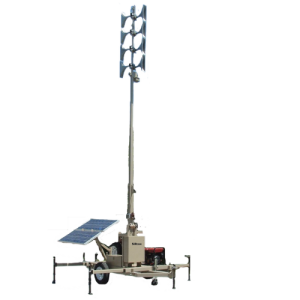
HQE Systems offers state-of-the-art acoustic hailers, essential for managing large crowds during campus events or emergencies. These devices can deliver clear, audible instructions and warnings across wide areas, ensuring that crucial communications reach all individuals swiftly and effectively. This technology is pivotal in guiding crowds safely during emergencies, helping to prevent panic and streamline evacuation or other necessary actions.
Mobile Surveillance Units with Advanced Capabilities:
HQE Systems specializes in equipping campuses with mobile surveillance units that include acoustic hailers and comprehensive CCTV systems featuring facial recognition technology. These units can be strategically positioned during large events or protests to monitor crowd movements and identify potential security threats. The mobility of these units allows for flexible deployment based on real-time needs and crowd dynamics, providing a critical advantage in maintaining campus safety.
Integration with Existing Alert Systems:
While many campuses already utilize alert software systems,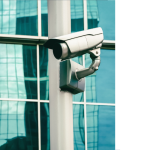 the addition of advanced surveillance tools like CCTV with facial recognition can significantly enhance these systems. By providing visual monitoring capabilities, these technologies complement existing alert systems, enhancing overall situational awareness and enabling a more coordinated response to incidents.
the addition of advanced surveillance tools like CCTV with facial recognition can significantly enhance these systems. By providing visual monitoring capabilities, these technologies complement existing alert systems, enhancing overall situational awareness and enabling a more coordinated response to incidents.
Expanding Emergency Management Capabilities
Incorporating advanced predictive analytics can significantly improve campus safety by anticipating potential flashpoints before they erupt into violence, allowing security teams to take preemptive action to defuse tensions. Additionally, wearable technology for security personnel can enhance communication in the field and provide real-time health monitoring, which is crucial for ensuring their safety during intense and chaotic situations. These technologies include:
Advanced Predictive Analytics:
- Utilizing data-driven insights, predictive analytics tools can analyze patterns from past events to forecast potential security breaches or escalations. This proactive approach allows campus security to strategically position resources and personnel before incidents occur, potentially preventing violence and ensuring a safer environment for students and staff.
Wearable Technology for Security Personnel:
- Implementing wearable technology such as body cameras and biometric sensors can revolutionize the way campus security operates. Body cameras provide real-time video feed to command centers, enhancing transparency and accountability, while biometric sensors can monitor the health and stress levels of officers during high-pressure situations, ensuring that they remain capable of performing their duties effectively.
Conclusion
Enhancing emergency response capabilities on college campuses is an ongoing challenge that requires thoughtful consideration and the adoption of cutting-edge technologies. By integrating HQE Systems’ advanced technologies and innovative solutions, educational institutions can ensure they are well-prepared to handle any situation effectively. These technologies not only improve immediate safety outcomes but also contribute to the long-term resilience and sustainability of campus security systems. Moving forward, the collaboration between technology providers and educational institutions will be crucial in shaping a safe and secure environment conducive to learning and growth.
Enhancing Campus Safety: Proactive Measures and Technological Integration
The challenge of ensuring safety on college campuses is multifaceted, demanding a dynamic approach that leverages the latest advancements in technology and strategic planning. As demonstrated, integrating advanced technologies from providers like HQE Systems into campus security frameworks offers a substantial improvement in how emergencies are managed and resolved. These technologies, including acoustic hailers, mobile surveillance units, and advanced predictive analytics, provide campuses with the tools necessary to enhance situational awareness, improve communication, and pre-empt potential crises.
Moreover, the integration of wearable technology for security personnel and the strategic use of data analytics can transform emergency responses from reactive to proactive, ensuring that campuses are not only responding to incidents as they occur but are also anticipating and preventing potential threats. This shift is crucial in maintaining a safe environment where academic activities can flourish without the disruption of security concerns.
As campuses continue to be vibrant centers of learning and debate, the responsibility to maintain a safe environment grows. It is imperative that institutions not only adopt these advanced security measures but also foster a culture of safety that involves the entire campus community—from students and faculty to security teams. This collaborative approach ensures that security measures are understood, trusted, and integrated into the daily lives of all campus members.
HQE Systems is a certified Veteran Owned Company. For more information about HQE Systems Inc. and its emergency management, electronic security, and integration solutions, please visit www.hqesystems.com.

Contact: David Ditto (Early Warning Systems Subject Matter Expert)
Email: David.Ditto@hqesystems.com
Phone Number: (843) 872-7020
____________________
HQE Systems, Inc. | HQE is a Minority-Owned Service Disabled Veteran Owned Small Business (SDVOSB) providing full solutions for: Mass Notification Systems, Electronic Security Systems, Software Development Services, Contract Support, and Prototyping Services. As a brand-agnostic solutions provider, HQE prides itself in providing the BEST solution for the project. HQE possesses over 30+ factory certifications and reseller licenses to ensure our clients receive the highest quality service at the ideal budget. HQE can provide full design, installation, integrations, upgrades, and long-term maintenance support for any size and scope project.


